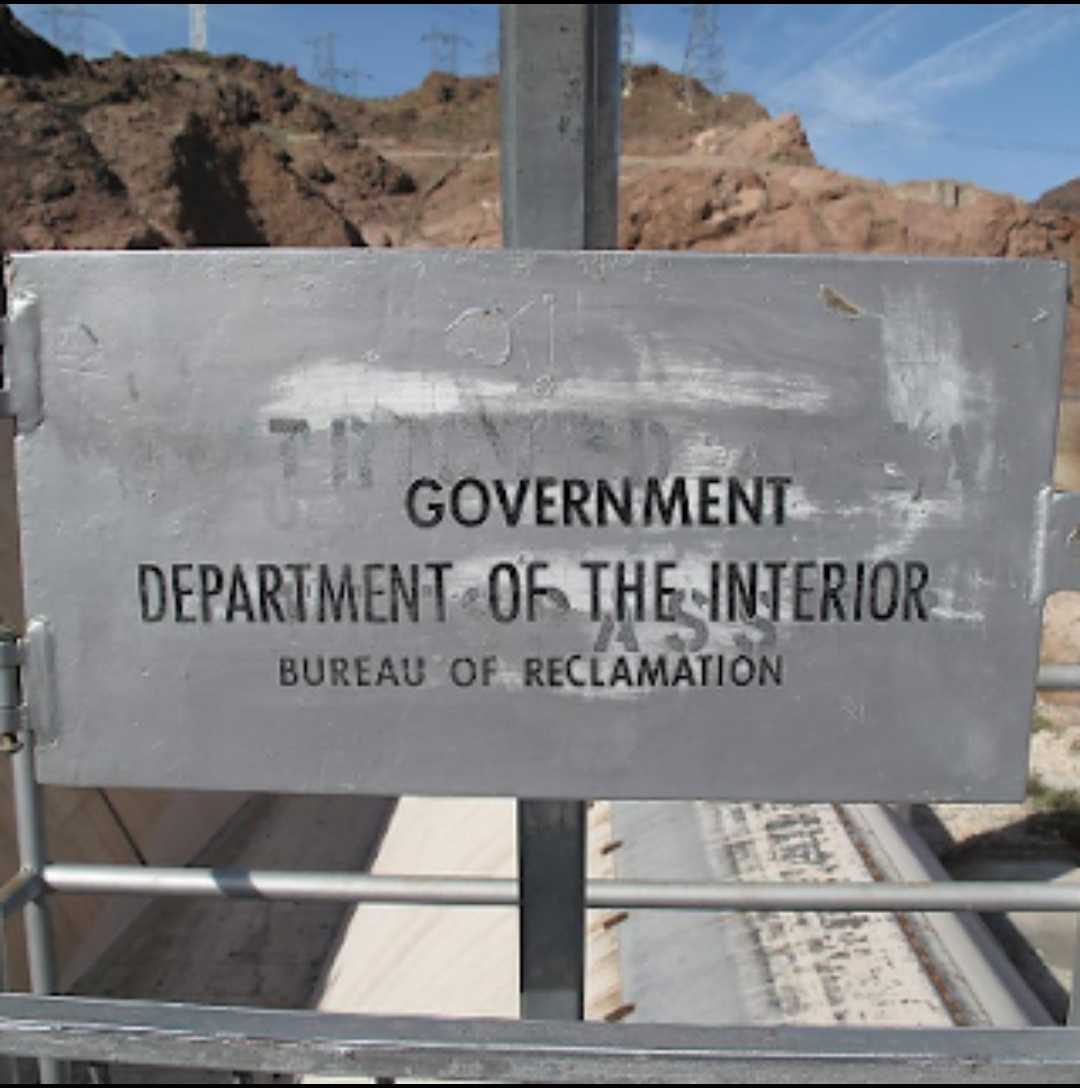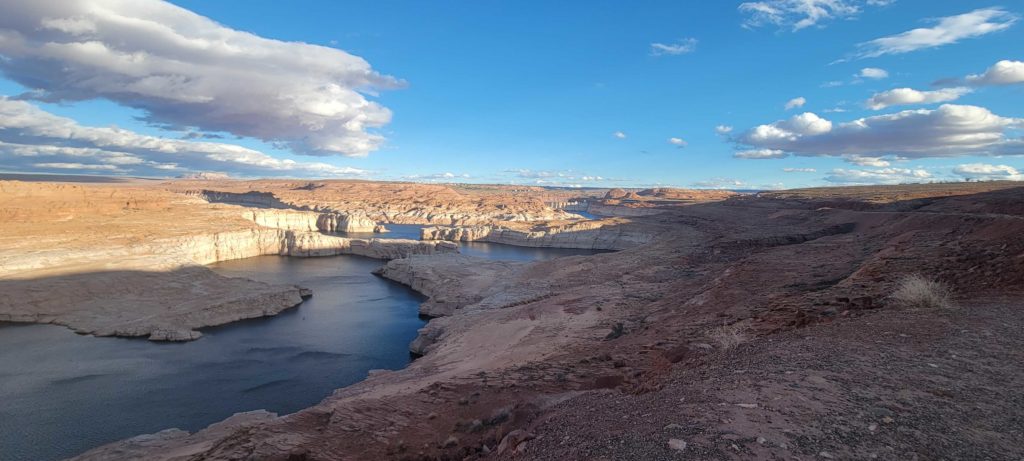
Lake Powell
Page, Arizona –The Bureau of Reclamation announced this week in a call-in press conference, that they would be releasing 500,000-acre-feet of water from Flaming Gorge Reservoir over the next year to raise water levels at Lake Powell by 16 feet. They said that in addition to the retention of 480,000 acre-feet already in Lake Powell, from downstream Lake Mead, the additional water would prop up operations of the Multi-Billion-dollar hydroelectric dam on the Utah/Arizona line. The problem is they are… (clearing my throat)… prevaricating.
Whether intentional or incidental, the BOR is mischaracterizing the effect of their action. None of the national media in attendance at the press conference that reported on the announcement seemed to notice. Journalists are just not good at math, it seems, and neither are government officials at the BOR. Here’s why.
The 480,000-acre-feet, 300,000 of which are already in Lake Powell right now, has the lake elevation at 3522. The fact that it is already there means it won’t raise the lake level an inch because it’s already there.
The addition of the 500,000-acre-feet, according to the BOR, could raise the lake by 16 feet… if you poured it all in one day, without any evaporation, runoff, or usage. Accordingly, adding the 500,000-acre-feet over the next year, without any other factors included, could raise the lake to a maximum estimated level of 1.3 feet of rising per month. (Divide 16 by 12, and you get 1.3)
Using this math, the maximum lake level will rise the lake up to 3524 feet, (one foot below the parameter they established for the safe operation of the dam.)
Add in the fact, however, that 8 percent of the lake evaporates, especially in the 120-degree heat of southern Utah desert summer, and the fact that usage of the lake and inflows will vary with increasing populations and seasonal influxes. Sources familiar with the BOR policy say they should have said, “the lake will not rise 16 feet, but will hopefully not drop 16 feet between now and April 2023.” In all likelihood, they admit, the lake will slip closer and closer to the dead pool this summer.
What this means is the press release issued by the BOR this week, which was regurgitated by dozens of news sources worldwide, including the New York Times, was a lie.

If you saw our interview with Glen Canyon Institute head, Eric Balken earlier this week, he said, “Even with those very drastic efforts, it’s still projected that Lake Powell is going to be within spitting distance of minimum power pool in less than a year. I don’t think anyone is going to say otherwise, even from the water agencies. They all know, it is just temporary, and it’s just buying them time.”
But the BOR did say that it would raise the lake 16′, and either they are clueless or they are outright lying. There is no way anyone could possibly believe that 500,000 additional acre-feet, a mere fraction of the nearly 6 Million acre-feet in the lake right now, can raise the level 16 feet for a whole year.
What’s more, as a reporter from KUNC, Alex Hager asked in the press conference, “What is the agency’s long-term strategy here? It’s just that a lot of the moves we are talking about now feel a little reactionary?”
“Reactionary’? That was a very diplomatic term to use when the drought is 23 years old and this lake has been below grade for at least a month and a half. What’s more, the extra 500,000 acre-feet has been available for transfer since the beginning of the year and before, when levels dropped outside stated standard operating procedures that have been in place since the creation of the Lake in the late 1960s.
In the Navy, if a Captain runs his Trillion dollar aircraft carrier outside Standard Operating Procedure (S.O.P), his career is over. If the BOR runs a Trillion dollar dam that serves millions of people out of S.O.P., no one seems to care. Why the double standard and why the delayed response?
Jennifer Erickson, a spokesperson for the Bureau of Reclamation, said in an interview Wednesday, “We did a 24-month study that concluded in April and there are a variety of authorities who have to be consulted in order to take actions like this one.”
Lake Locals have been calling on the BOR to take action since last year, so not only has the BOR displayed a failure of duty to protect that dam but they, along with a bevy of other agencies, have demonstrated a tone-deaf posture when it comes to rectifying the situation.
The only thing that was said in the press conference this week that might suggest some forward-thinking came from the Assistant Secretary of Water and Science, Tanya Trujillo, who said, “We are always open to suggestions and input from members of our community, from academic institutions, from scientists, and researchers. (T)The conditions we face are so serious, we are going to have been using all of those available resources.”
The time for a Manhattan Project-sized response to the western water situation was 15 years ago when scientists predicted this was coming. The Lake will be dry by next year, by many accounts.
One solution that has been bandied about by weirdos and crackpots for the last 23 years, but given legitimacy this week in light of the desperation at BOR to manage this ongoing crisis, was suggested in an op-ed published on May 3rd by the Wall Street Journal. In it, they say, “The real challenge is the development of a massive desalination capacity to refill reservoirs and aquifers, combined with new infrastructure to capture and transport torrential rainfall.”
If the Roman Empire managed to transport needed water across Europe three thousand years ago with a high-tech aqueduct system, one would think the world’s most powerful nation, The United States of America could somehow get their act together with a plan more substantial than what they announced this week.
Thumbnail Credits: US Bureau of Reclamation
Sources
- Reclamation’s drought response actions will boost Lake Powell (usbr.gov)
- 05/03/2022 Colorado River Media Call
- Jennifer Erickson, Bureau of Reclamation Public Affairs
- What’s the Matter With the Colorado River?




